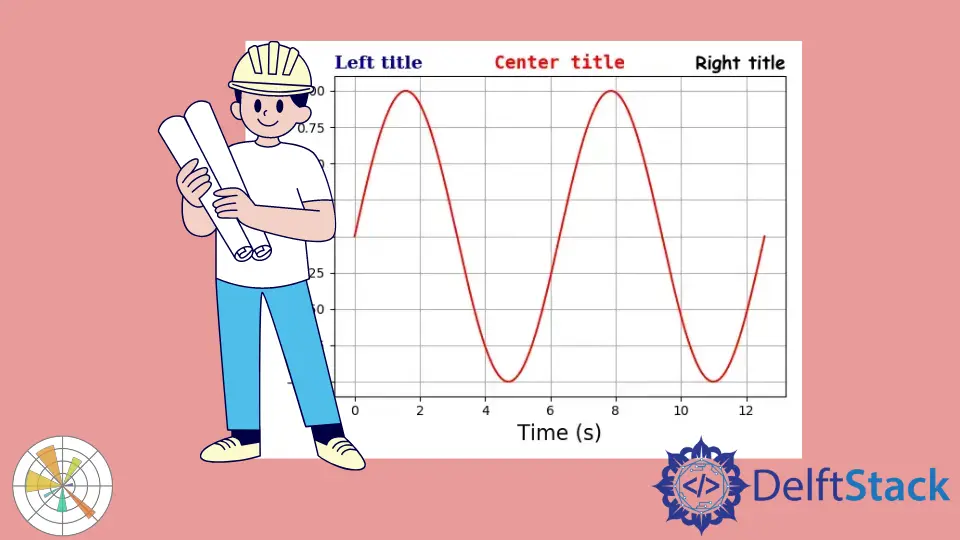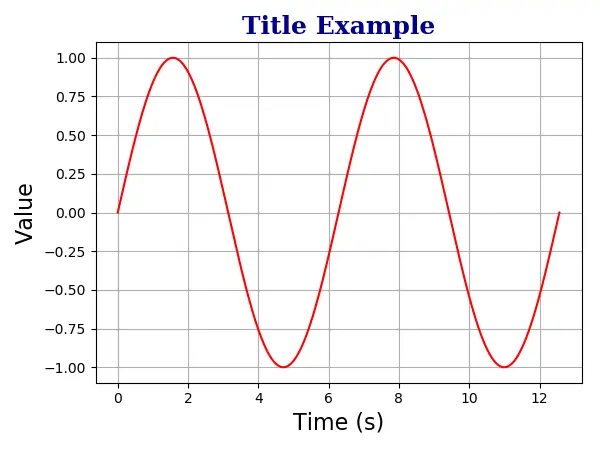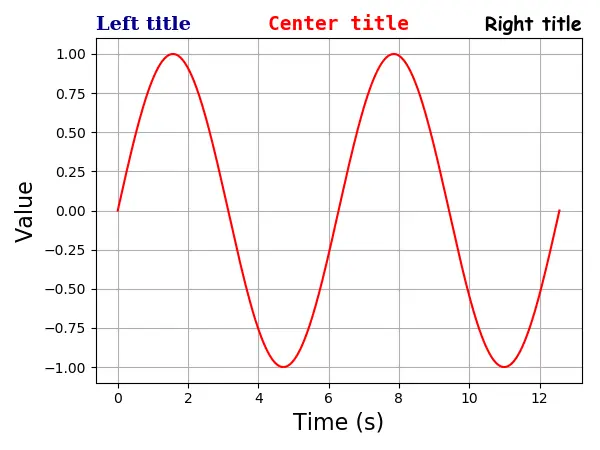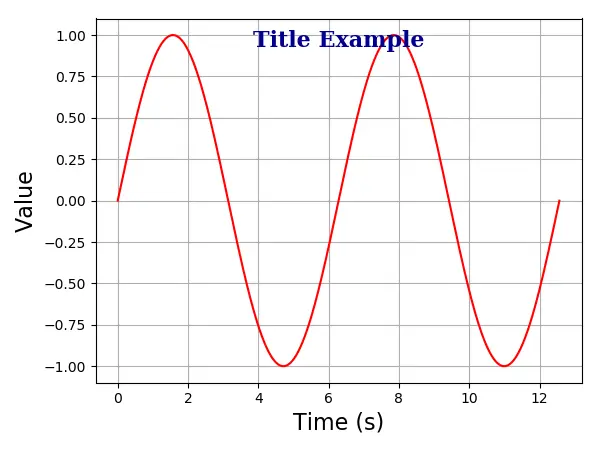Matplotlib Tutorial - Título Eixos

Neste tutorial vamos aprender sobre o título do eixo em Matplotlib.
Título Eixos Matplotlib
Sintaxe:
matplotlib.pyplot.title(label, fontdict=None, loc=None, **kwargs)
Define um título dos eixos actuais.
Parâmetros*
| Nome | Tipo de dados | Descrição |
|---|---|---|
label |
str |
texto do rótulo |
fontdict |
dict |
dicionário de texto do rótulo, como família, cor, peso e tamanho |
loc |
str |
A localização do título. Tem três opções, {'center', 'left', 'right'} e a opção padrão é center. |
# -*- coding: utf-8 -*-
import numpy as np
import matplotlib.pyplot as plt
x = np.linspace(0, 4 * np.pi, 1000)
y = np.sin(x)
plt.figure(figsize=(4, 3))
plt.plot(x, y, "r")
plt.xlabel(
"Time (s)",
size=16,
)
plt.ylabel("Value", size=16)
plt.title(
"Title Example",
fontdict={"family": "serif", "color": "darkblue", "weight": "bold", "size": 18},
)
plt.grid(True)
plt.show()

plt.title(
"Title Example",
fontdict={"family": "serif", "color": "darkblue", "weight": "bold", "size": 18},
)
Eixo Matplotlib Títulos Múltiplos
Um eixo pode ter no máximo três títulos que estão nas posições left, center e right. A posição do título específico é especificada com o argumento loc.
# -*- coding: utf-8 -*-
import numpy as np
import matplotlib.pyplot as plt
x = np.linspace(0, 4 * np.pi, 1000)
y = np.sin(x)
plt.figure(figsize=(8, 6))
plt.plot(x, y, "r")
plt.xlabel(
"Time (s)",
size=16,
)
plt.ylabel("Value", size=16)
plt.title(
"Left title",
fontdict={"family": "serif", "color": "darkblue", "weight": "bold", "size": 16},
loc="left",
)
plt.title(
"Center title",
fontdict={"family": "monospace", "color": "red", "weight": "bold", "size": 16},
loc="center",
)
plt.title(
"Right title",
fontdict={"family": "fantasy", "color": "black", "weight": "bold", "size": 16},
loc="right",
)
plt.grid(True)
plt.show()

Eixo Matplotlib Título dentro do Lote
Você também poderia colocar o título dentro da trama com a opção positon=(m, n) ou equivalente x = m, y = n. Aqui, m e n são números entre 0.0 e 1.0.
A posição (0, 0) é o canto inferior esquerdo do gráfico, e a posição (1.0, 1.0) é o canto superior direito.
# -*- coding: utf-8 -*-
import numpy as np
import matplotlib.pyplot as plt
x = np.linspace(0, 4 * np.pi, 1000)
y = np.sin(x)
plt.figure(figsize=(6, 4.5))
plt.plot(x, y, "r")
plt.xlabel("Time (s)", size=16)
plt.ylabel("Value", size=16)
plt.title(
"Title Example",
position=(0.5, 0.9),
fontdict={"family": "serif", "color": "darkblue", "weight": "bold", "size": 16},
)
plt.show()

Founder of DelftStack.com. Jinku has worked in the robotics and automotive industries for over 8 years. He sharpened his coding skills when he needed to do the automatic testing, data collection from remote servers and report creation from the endurance test. He is from an electrical/electronics engineering background but has expanded his interest to embedded electronics, embedded programming and front-/back-end programming.
LinkedIn Facebook